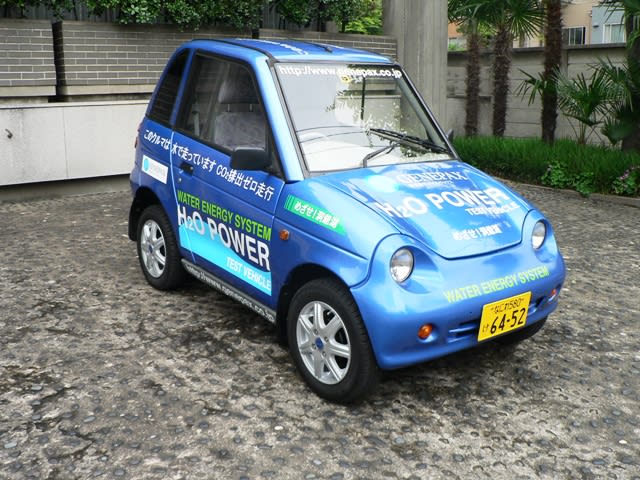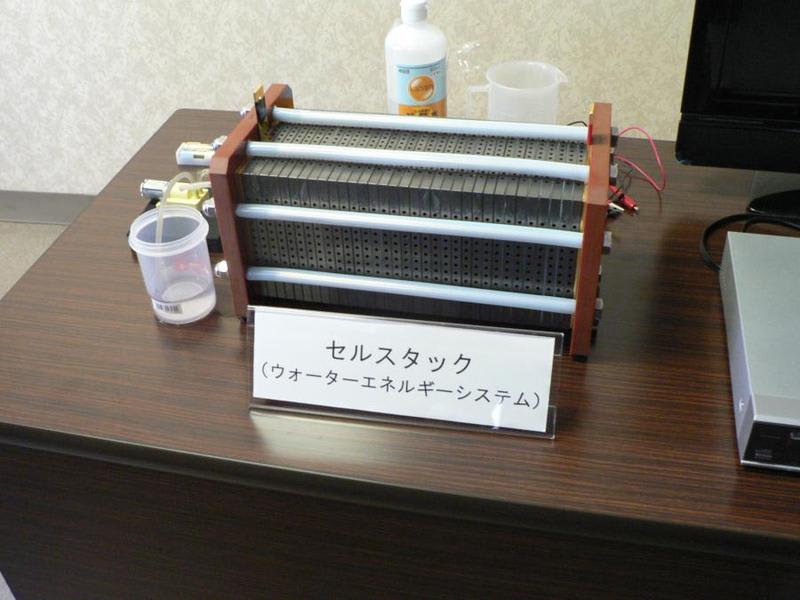荒田先生の常温核融合について、海外は注目している。!!
とくにインドの新聞ははっきり、
『成功』!と銘記している。!!
翻訳は時間のがかかるのでしないが、隠したい勢力と、隠しきれない世界が見え隠れする。常温核融合は、エネルギー危機詐欺の最も有力な障害情報である。のみならず、地球温暖化詐欺の最大の障害情報である。
今、壮大な詐欺が計画されている。あまりにも壮大な詐欺であるので、騙されているが、詐欺は詐欺である。いずれ馬脚を現す。それは上記2つと、それらに連なる食料危機である。それはあまりに広範に繰り広げられるものだから、今のところ詐欺であるとは思わない。人類の危機であると錯誤させられている。
温暖化は 二酸化炭素が原因と吹聴されている。これが真っ赤なウソ<http://blog.goo.ne.jp/tumuzikaze2/d/20080704>である。これは二酸化炭素排出権という証券市場創出するための演出である。証券というコマーシャルペーパー(CP)を創出して、賭博場(投機市場)を開設し、富を掠め取る謀略である。特に日本が危ない。CPは第二の貨幣。貨幣そのものが詐欺なら、CPもれっきとした詐欺である。
その為に原油高騰。食料高騰が始まった。さんざん金融市場で詐欺貨幣を乱発し、デリバディブ詐欺をし行き詰まったあぶく銭を先物商品市場につぎ込んだからである。これもやがてパンクする。新たな賭博場(投機市場)を必要としているのだ。しかし、これも限界というものがある。何であれ、粉飾決算はいずれ発覚する。それは誰でも分かる理屈であるから、詐欺師も分かってやっているに違いない。
その時、どうするか。答えは一つである。ドカーンしかない。9.11で詐欺CP事件をビルもろとも吹き飛ばしたように、世界的危機の中にうやむやに葬る気なのであろう。それが戦争であり、食料危機であり、経済崩壊である。膨らますだけ膨らませて、掠めるだけ掠めて、全ての証拠と共に証人をも含めて抹殺する。その腹である。
その時、恰も天災人災が人類に襲いかかったように装うはずである。それがHAARPであり、未だ隠されている最新兵器が動員され、天災が演出され、テロという人災が演出される。テロに対する戦争はその為に必要である。食料危機は作られている。先ずは高騰、異常気象、災害....。しかし、本当の狙いは種苗の支配で完成する。おそらく、詐欺師は水の支配まで狙っている。
そうはさせない。と言うことは、そうは出来ないようにするしかない。その一つに常温核融合成功がある。
我々で、その技術を完成させることは出来ないかも知れないが、完成を手助けすることは出来る。少なくとも、情報を拡散して、邪魔だてを封殺することは当然出来る。何よりも大切なことは、真実を伝えることである。そうすれば、詐欺師に騙されない。
【転載開始】
Cold-fusion demonstration "a success"

On 23 March 1989 Martin Fleischmann of the University of
Southampton, UK, and Stanley Pons of the University of Utah, US,
announced that they had observed controlled nuclear fusion in a glass
jar at room temperature, and ? for around a month ? the world was under
the impression that the world's energy woes had been remedied. But,
even as other groups claimed to repeat the pair's results, sceptical reports began trickle in. An editorial in Nature
predicted cold fusion to be unfounded. And a US Department of Energy
report judged that the experiments did "not provide convincing evidence
that useful sources of energy will result from cold fusion."
This hasn't prevented a handful of scientists persevering with
cold-fusion research. They stand on the sidelines, diligently getting
on with their experiments and, every so often, they wave their arms
frantically when they think have made some progress.
Nobody notices, though. Why? These days the mainstream science media
wouldn't touch cold-fusion experiments with a barge pole. They have
learnt their lesson from 1989, and now treat "cold fusion" as a byword
for bad science. Most scientists agree, and some even go so far as to
brand cold fusion a "pathological science" ? science that is plagued by
falsehood but practiced nonetheless.
There is a reasonable chance that the naysayers are (to some extent)
right and that cold fusion experiments in their current form will not
amount to anything. But it's too easy to be drawn in by the crowd and
overlook a genuine breakthrough, which is why I'd like to let you know
that one of the handful of diligent cold-fusion practitioners has
started waving his arms again. His name is Yoshiaki Arata, a retired
(now emeritus) physics professor at Osaka University, Japan. Yesterday,
Arata performed a demonstration at Osaka of one his cold-fusion
experiments.
Although I couldn't attend the demonstration (it was in Japanese, anyway), I know that it was based on reports published here and here.
Essentially Arata, together with his co-researcher Yue-Chang Zhang,
uses pressure to force deuterium (D) gas into an evacuated cell
containing a sample of palladium dispersed in zirconium oxide (ZrO2?Pd).
He claims the deuterium is absorbed by the sample in large amounts ?
producing what he calls dense or "pynco" deuterium ? so that the
deuterium nuclei become close enough together to fuse.
So, did this method work yesterday? Here's an email I received from Akito Takahashi, a colleague of Arata's, this morning:
"Arata's demonstration...was successfully done. There came
about 60 people from universities and companies in Japan and few
foreign people. Six major newspapers and two TV [stations] (Asahi,
Nikkei, Mainichi, NHK, et al.) were there...Demonstrated live data
looked just similar to the data they reported in [the] papers...This
showed the method highly reproducible. Arata's lecture and Q&A were
also attractive and active."
I also received a detailed account from Jed Rothwell, who is editor of the US site LENR
(Low Energy Nuclear Reactions) and who has long thought that
cold-fusion research shows promise. He said that, after Arata had
started the injection of gas, the temperature rose to about 70 °C,
which according to Arata was due to both chemical and nuclear
reactions. When the gas was shut off, the temperature in the centre of
the cell remained significantly warmer than the cell wall for 50 hours.
This, according to Arata, was due solely to nuclear fusion.
Rothwell also pointed out that Arata performed three other control experiments: hydrogen with the ZrO2?Pd sample (no lasting heat); deuterium with no ZrO2?Pd sample (no heating at all); and hydrogen with no ZrO2?Pd
sample (again, no heating). Nevertheless, Rothwell added that Arata
neglected to mention certain details, such as the method of
calibration. "His lecture was very difficult to follow, even for native
speakers, so I may have overlooked something," he wrote.
It will be interesting to see what other scientists think of Arata's
demonstration. Last week I got in touch with Augustin McEvoy, a retired
condensed-matter physicist who has studied Arata's previous cold-fusion
experiments in detail. He said that he has found "no conclusive
evidence of excess heat" before, though he would like to know how this
demonstration turned out.
I will update you if and when I get any more information about the
demonstration (apparently there might be some videos circulating soon).
For now, though, you can form your own opinions about the reliability
of cold fusion.














